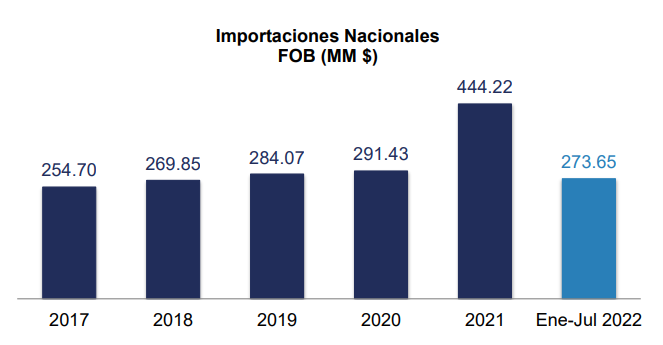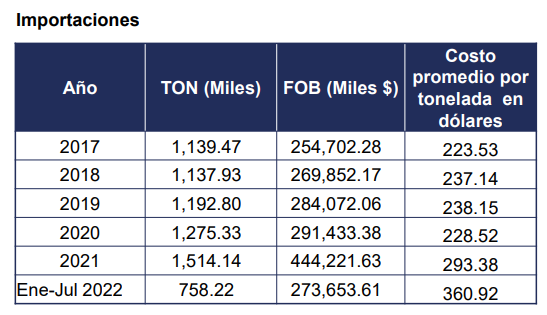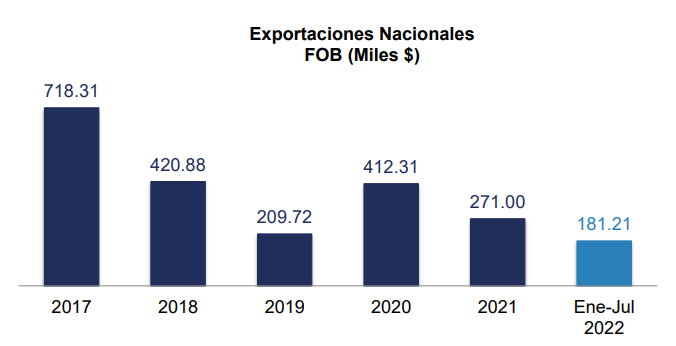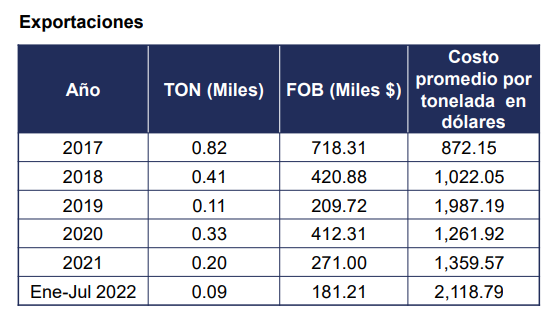Ecuador - 2.7 Milling Assessment
Overview, Wheat in Ecuador
In 2022, the food sector imported about 650,000 tons, and as of September 2023, about 394,000 metric tons of food wheat were imported. The main countries from which wheat is imported are: 88% from Canada, 5% from the United States, 6% from Argentina. However, due to quality issues, the largest quantity comes from Canada.
Wheat is a cereal that is scarcely produced here in the country, and it is not enough. National production amounts to a maximum of 1% of what is demanded here in Ecuador regarding wheat. The milling industry must import 99% of wheat to supply consumer demand. On the scale, the industry absorbs an average of 4,000 tons of domestic wheat and imports an average of 1.2 million tons of wheat.[1]
The two strongest markets for which wheat is destined in Ecuador are milling for human consumption and balanced for animal nutrition. The milling sector is concerned with the production of flour, by-products and main derivatives such as bread and pasta, which are part of the basic family basket. Cookies, pastries in general, snacks, sausages, and multipurpose flour are also produced for the HO.RE.CA segment.
The bread, cookies, pasta, pizza, artisanal bakery, and empanada industries depend on imported materials, which are also part of a global trend. There are few countries that are self-sufficient in wheat: China is the largest producer of wheat in the world, but it is also the largest world importer.
In Ecuador, 78% of imported wheat is used for grinding into flour, and of that segment, 55% is used to produce bread and 24% for pasta, according to the Ecuadorian Association of Millers Asemol, which presents the main millers in Ecuador: Molinos Superior, La Moderna, Molino San Luis, Molinos Miraflores, Industrias Catedral, Industrial Molinera, Falimensa, Buenaño and Caicedo Business Company, Molinos e Industrias Quito, Successors of Jacobo Paredes and Molinos Poultier.
Wheat is the most demanded cereal in Ecuadorian homes, because it is a component of basic necessities. The largest production is located in the following provinces: Bolívar, Chimborazo, Cotopaxi, Imbabura and Carchi. For the year 2021, the harvested wheat area in Ecuador was 6,038 hectares, covering a production of 10,898 Thousand MT. In 2021, there was a 26% drop in production compared to 2020.

Source: National Institute of Statistics and Censuses – ESPAC 2021 Prepared by: Products and Services Analysis Sub-Management
Ecuador is a minor producer of wheat[2]. Only 1.13% of national demand comes from the Ecuadorian countryside. The rest is imported, mainly, from Canada, the United States and Argentina.
National wheat production in 2021 decreased by 26%. Likewise, it was observed that the province of Carchi leads 55% as a producing species and 39% in harvested area nationwide.
There are 694,000 tons that are demanded per year in Ecuador for various uses in milling, according to data from the Ministry of Agriculture. In Ecuador, 78% of imported wheat is used for milling to make flour, and of that segment, 55% is used to produce bread and 24% for pasta.
In 2021, Ecuador imported $589M in Wheat, becoming the 27th largest importer of Wheat in the world. In the same year, Wheat was the number 6 most imported product in Ecuador, mainly from: Canada ($406M), United States ($113M), and Argentina ($69.9M).
Ref: https://oec.world/es/profile/bilateral-product/wheat/reporter/ecu


The import of wheat into Ecuador during 2021 was $444.22 MM FOB, 52% higher than in 2020.
According to the Ecuadorian temporary law, the importation of wheat is not subject to customs taxes. This tax exemption has been extended until December 31, 2024.


Source: National Institute of Statistics and Censuses – EPAC 2021 Prepared by: Products and Services Analysis Sub-Management
In 2021, the wheat sector exported $271 Thousand FOB, showing a drop of 34% compared to 2020. As of July 2022, exports were recorded for the value of $181.21 Thousand FOB, equivalent to 67% of what was reported in all year 2021.
Ecuadorian Association of Millers ASEMOL
The Ecuadorian Association of Millers “ASEMOL” brings together the main key companies in the sector.
- Molinos Miraflores, http://www.molinosmiraflores.com/
- Industrial Molinera, industrialmolinera.com
- Buenaño y Caicedo Cía. de Negocios Ciudadela Católica - Cuenca
- 593-7 234-1015
- Molinos San Luis, molinosanluis.com
- Grupo Superior, gruposuperior.com
- Industrias Catedral, industriascatedral.com
- Molinos Poultier, molinospoultier.com
- Industrias y Molinos Quito Cia. Ltda. Marca registrada http://molinosroyal.com/
- La Industria Harinera, santa-lucia.ec
- Fábrica de Alimentos, FALIMENSA https://falimensa.com/
- Moderna Alimentos S.A., moderna.com.ec
President of ASEMOL: Álvaro Fernando Sánchez, (Successors of J. Paredes M.S.A.)
Av. De La Prensa N56-87 and Pasaje Manuel Herrera. Quito, Ecuador
Telephones: (593-2) 2442519 (593-2) 2469369
The main companies dedicated to the industrialization of wheat are Molinera Miraflores de Ambato, Molinos San Luis de Carchi, Molinos E. Industrias de Quito, Industrial Molinera C.A. of Guayaquil, Industria Harinera S.A. de Santa Lucía (Industria Harinera S.A.), Wheat flour mill in Riobamba, Molinera Manta, Industria Catedral S.A., Impor-Export Castro, Agroange and Disprac: Distributor of wheat products.
For more information on milling company contact details, please see the following link: 4.6 Storage and Milling Companies Contact List.
[2] Few countries are self-sufficient in wheat: China is the world's largest producer of wheat, but it is also the world's largest importer.